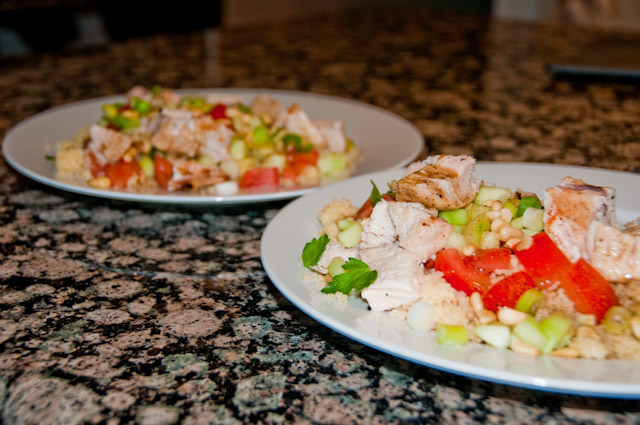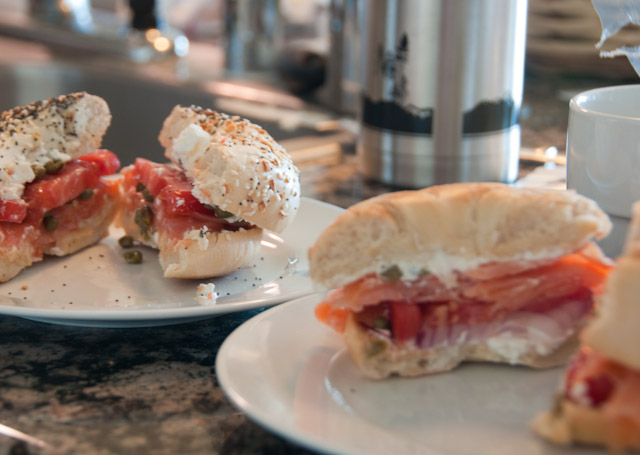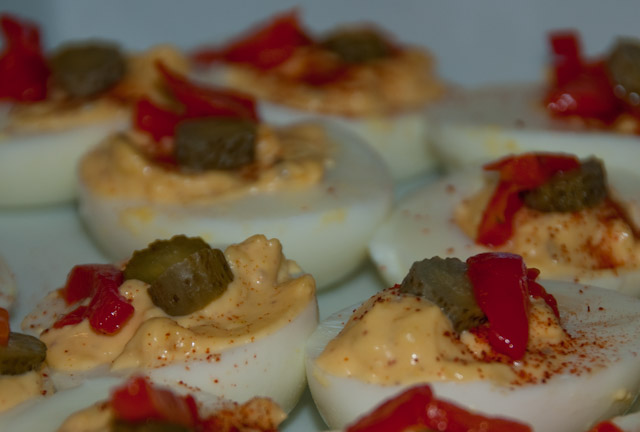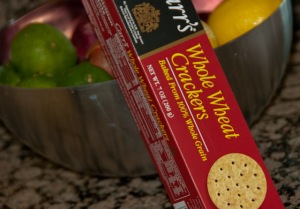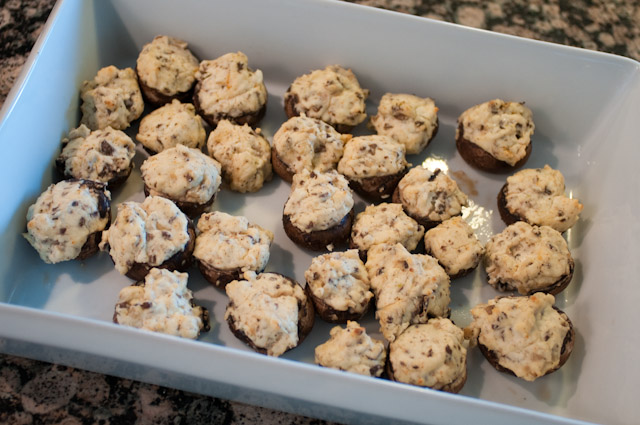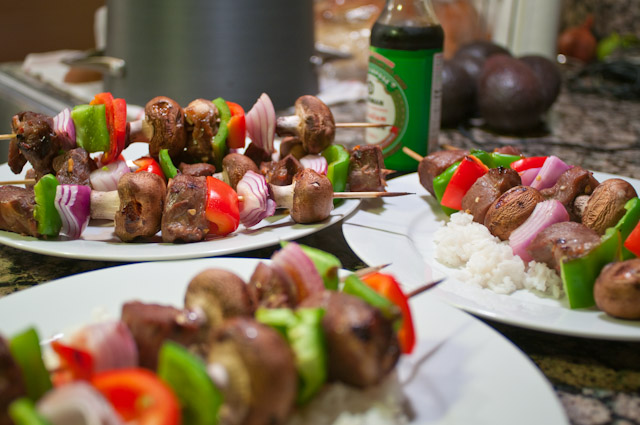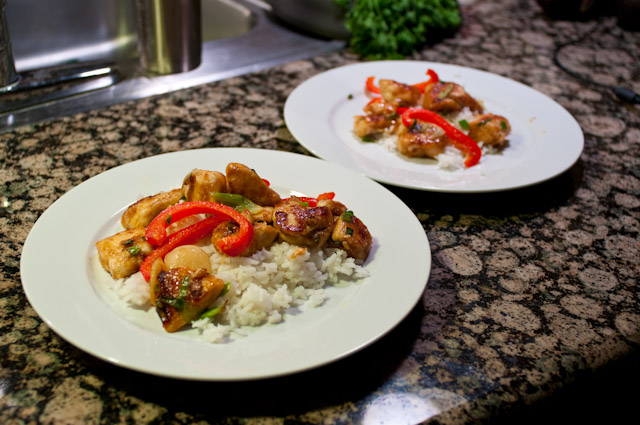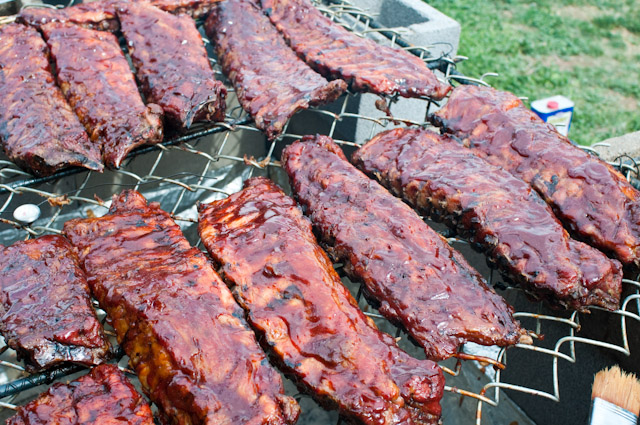
Good ribs are amazing. Saucy, fall-off-the bone meat, messy goodness. Nom.
My friends graciously hosted a weekend barbeque where I cooked up a batch of ribs. I’ve been working on them for a long time and I’m happy to share some of my secrets.
I’ve found that the single biggest factor to the “fall-off-the-bone” factor is removing the thin, slippery membrane off the back of the ribs. In the past, I’ve simply used a knife and patiently worked the membrane off. That’s a lot of work and, given the slipperyness of the membrane, a little dangerous. Or you could follow the tips in this video and use a paper towel to get a better grip. Better yet, you could have your butcher do it…
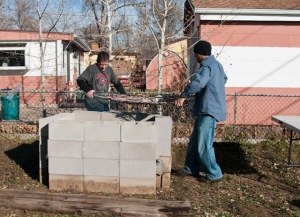 It’s not easy to keep the temperature even on a charcoal grill, but it’s still worth a try. For this barbeque, we built a 2×3 cinder block pit, 4 blocks tall. That gave us plenty of height to manage the height and we could add coals as required to keep the fire at 200°, give or take 20º. Here’s a picture of the pit we built when we did a pig roast a few months ago.
It’s not easy to keep the temperature even on a charcoal grill, but it’s still worth a try. For this barbeque, we built a 2×3 cinder block pit, 4 blocks tall. That gave us plenty of height to manage the height and we could add coals as required to keep the fire at 200°, give or take 20º. Here’s a picture of the pit we built when we did a pig roast a few months ago.
For the grate, I used an aluminum chain link fence, reinforced with a little rebar. It was tough to track down non-galvanized fencing, but you should never cook on galvanized metal–the zinc will poison you. DO NOT USE GALVANIZED STEEL!
After setting up the grill and getting the coals going, the ribs went on the grate, bone side down for an hour, sometimes loosely covered with aluminum foil, sometimes not. I found that covering with the foil could wildly change the temperature of the grill, by 50º or more. I also felt that by starting bone side down, I could protect the meatiest parts from any early grilling missteps. After an hour, I flipped the ribs over, meat side down to cook for another hour. At this point, I’ve not added any sauce.
Two hours in, I wrapped each rack tightly in aluminum foil and place bone-side down. The idea here is to steam the ribs a bit, loosening the grip between the meat and the bones. I let this go for a couple hours, frequently checking the temperature of the grill.
The ribs have been cooking at about 200º for about four hours when I removed the aluminum foil and began basting the ribs with sauce. In the past, I’ve been happy to use some store-bought sauce, but for this effort, I figured I’d try my hand at whipping up a batch:
Ingredients
- 6 cups ketchup (it’s got enough vinegar in it, so you don’t need more)
- 10 TBSP molasses (about 1/2 a bottle)
- 2½ – 3 cups brown sugar
- 1 cup whiskey (I had a bottle of George Dickel’s Tennessee handy)
- 1 TBSP sea salt
- 2 TBSP worchester sauce
- 1 TSP garlic powder
- 1 TBSP pepper
Directions
- On low heat, slowly heat the ketchup.
- Slowly add some molasses, some sugar, some whiskey, while stirring to make sure the sugar doesn’t clump.
- Continue adding more of the molasses, sugar, whiskey, and the remaining ingredients while stirring.
- Constant taste testing, and manipulating the ingredients (mostly the sugar content) until I found the right sweet/saltiness. I didn’t worry that the alcohol wouldn’t evaporate right away; I figured it would once on the grill.
- Let it sit, on a low heat, for an hour.
- Let it rest, off the heat for a couple hours, then refrigerate for a night or two before using.
Yield: about 7 racks worth, plus leftover sauce for dipping. I made 15 racks, so I tripled this recipe and still have a bunch leftover.
After removing the ribs from the aluminum foil, I cut a few racks into halves, for a few smaller portions and began applying the sauce. Placing the meat-side down, I started on the bone side with a little sauce and let it set there for 15 minutes before flipping the ribs bone-side down and applying the sauce to the meat, letting it set for 20 minutes before applying another round of sauce. After an hour, it looks pretty amazing.
I like to cook the ribs, sauce-on, for at least an hour, and we left some of them on for two. That means total cooking time of 5-6 hours.
One last trick I’ve learned is not to dive right in on the ribs. Let them rest for at least 10 minutes before serving. The meat will continue to cook even after they’re off the heat source and it’ll be more pleasant to eat the meat when it’s not scalding your tongue.
I suspect that rib recipes are deeply personal, almost family-guarded secrets. I tend to think that there’s no perfect way, but to my mind, the ribs I love the most are sweet and tender, to the point where a full rack is almost not enough. Good thing I made a few extra racks…
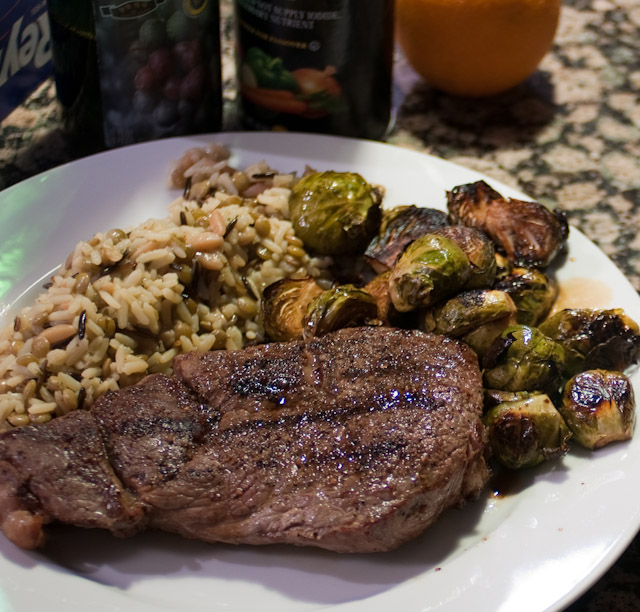 Tasked with going to the grocery store without a plan, I tend to resort to simple meals. Here’s an old favorite–a ribeye steak, brussel sprouts, and wild rice with lentils.
Tasked with going to the grocery store without a plan, I tend to resort to simple meals. Here’s an old favorite–a ribeye steak, brussel sprouts, and wild rice with lentils.
